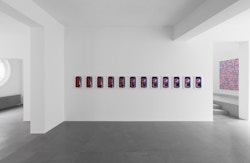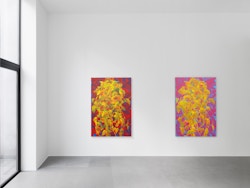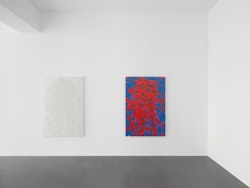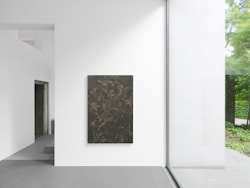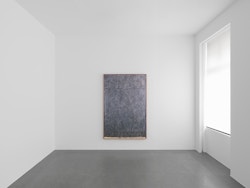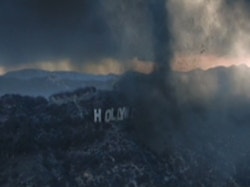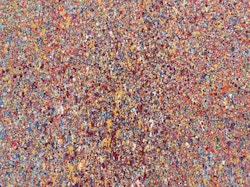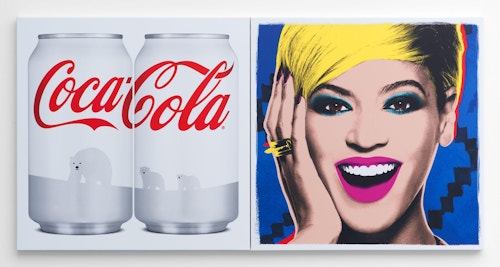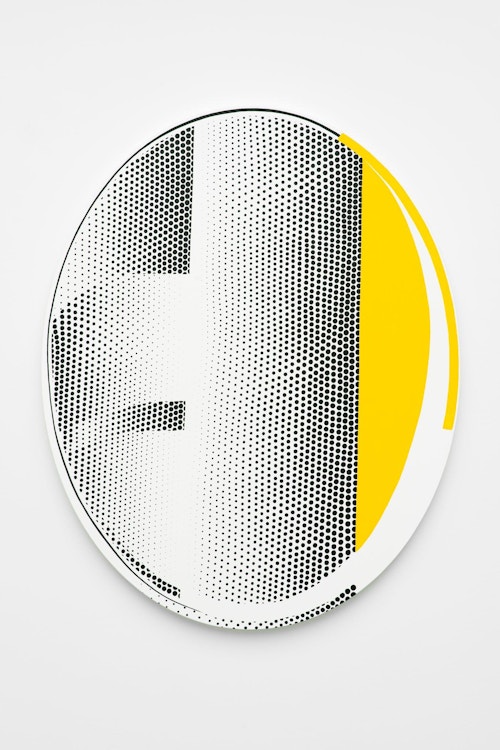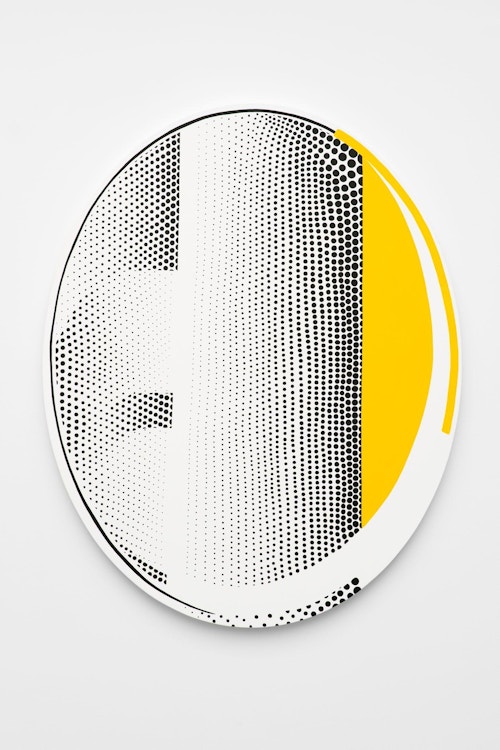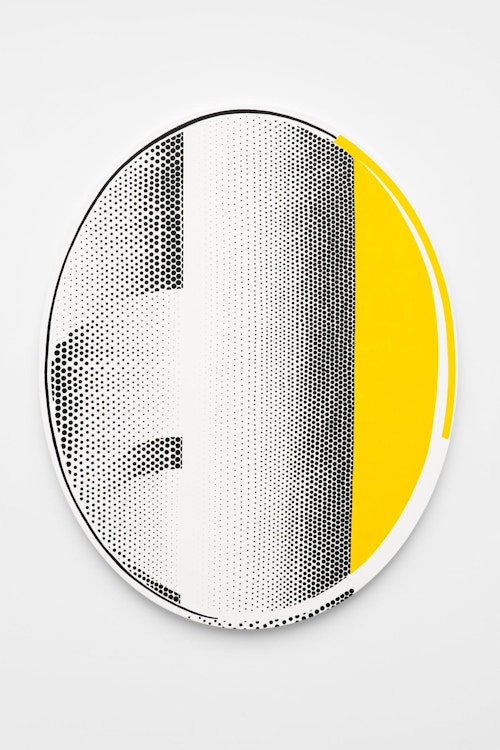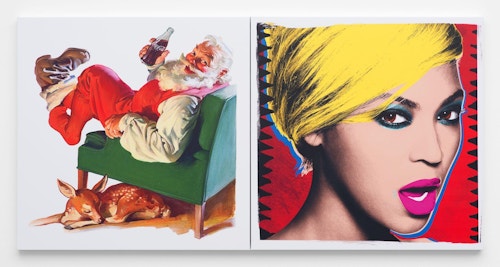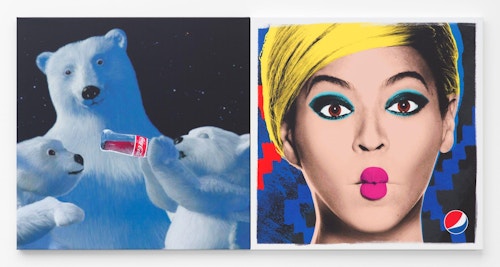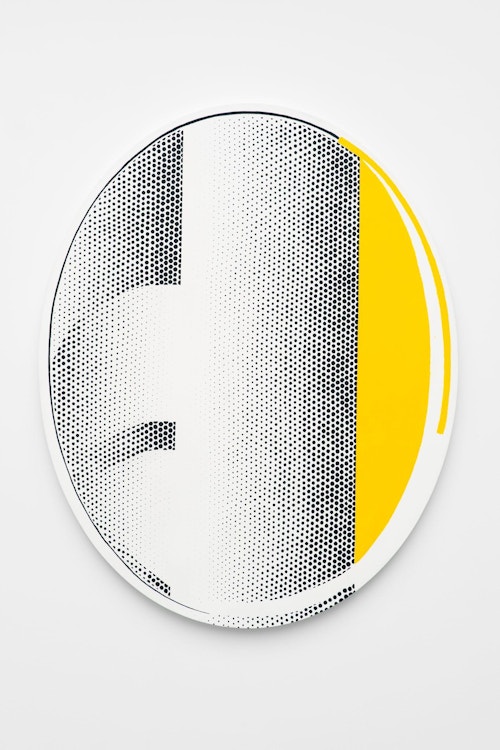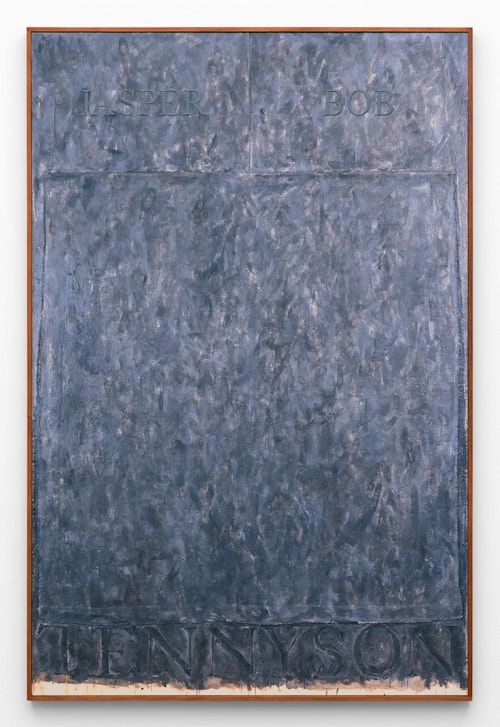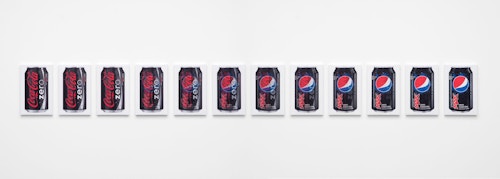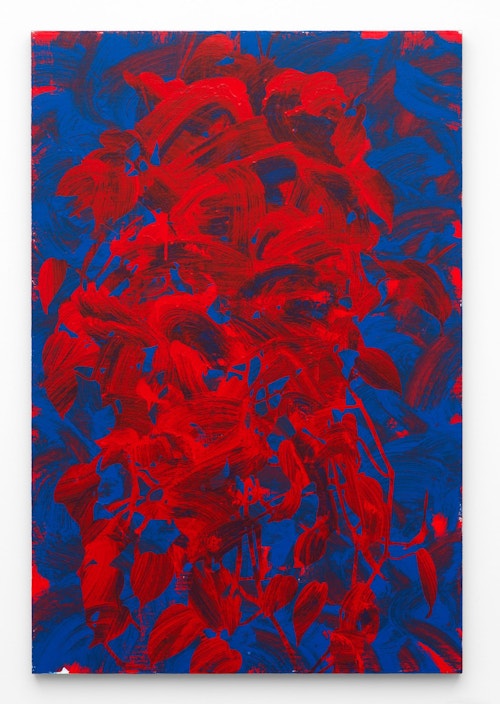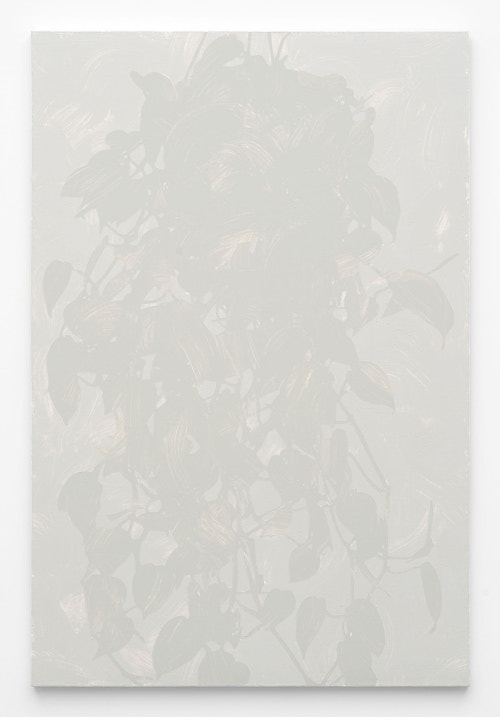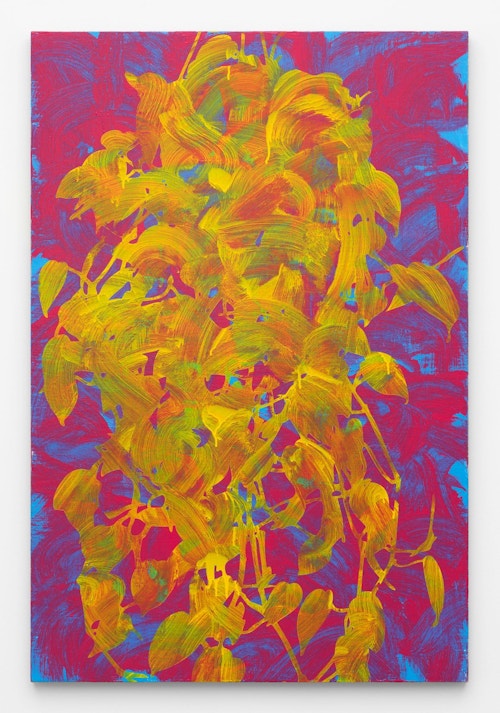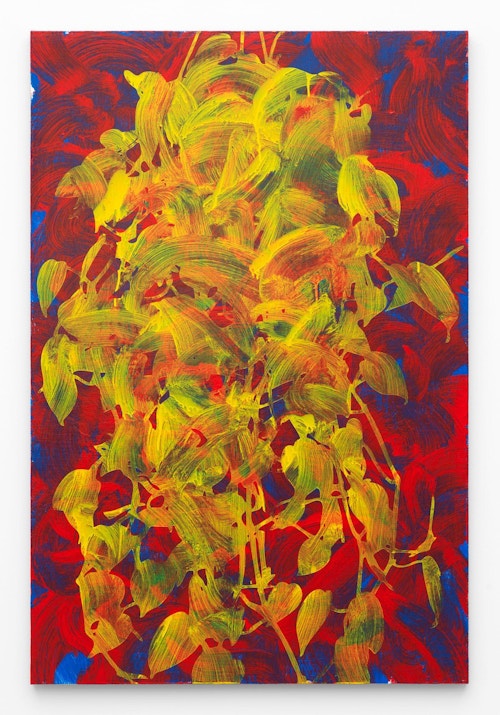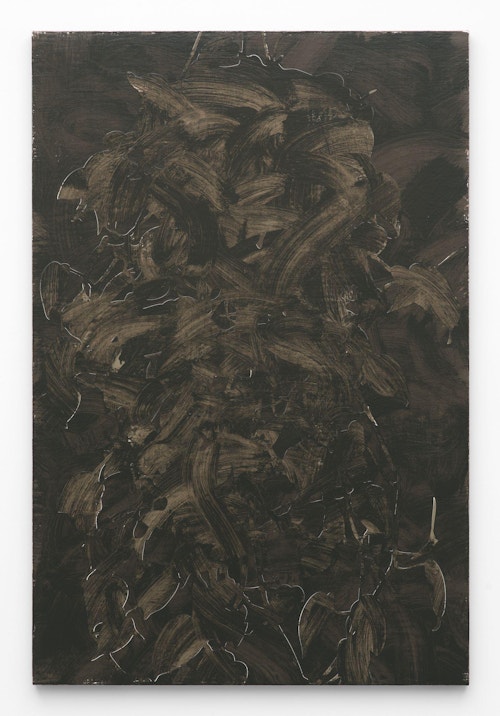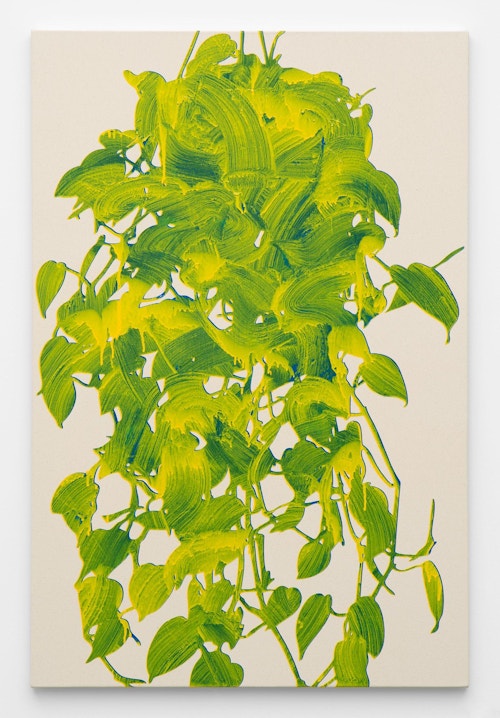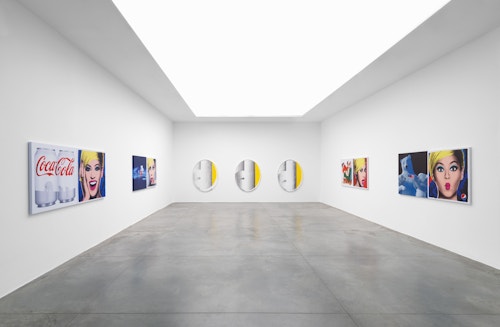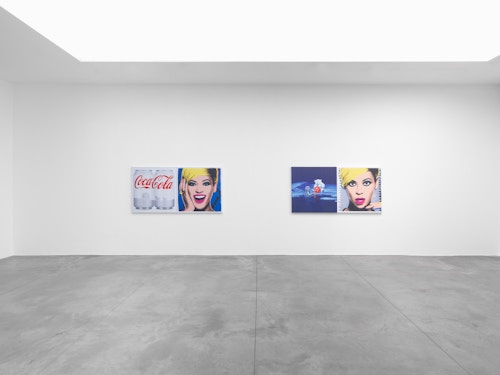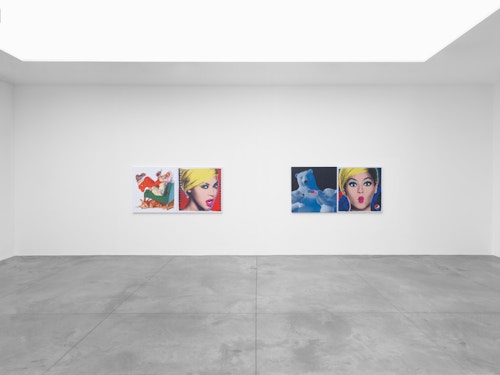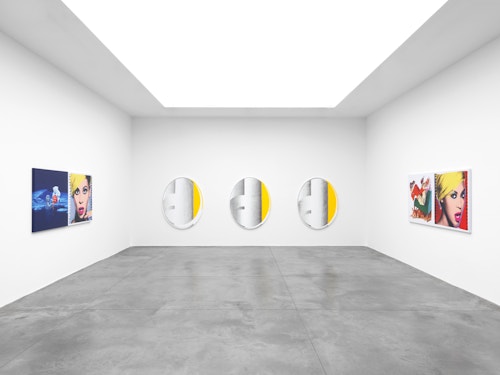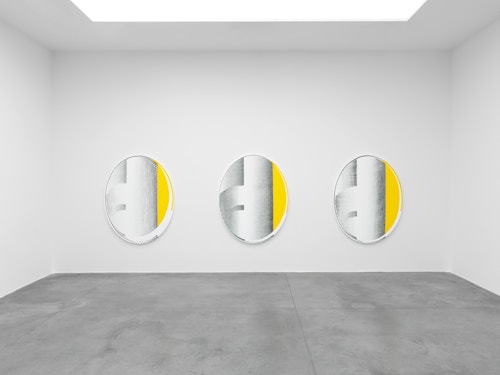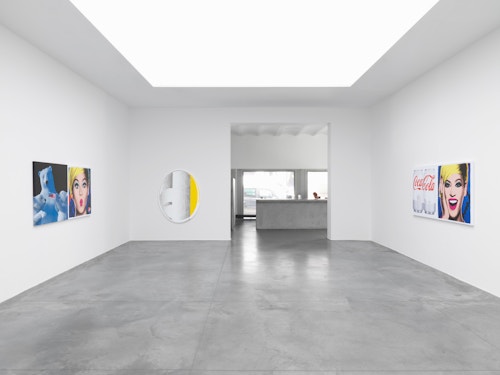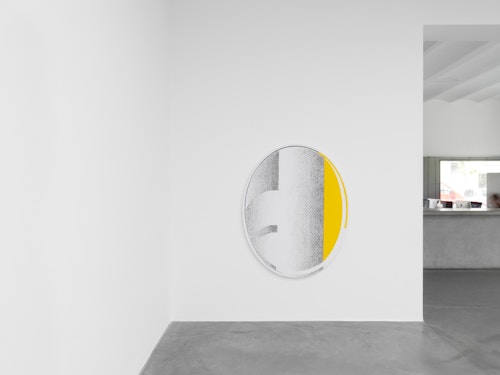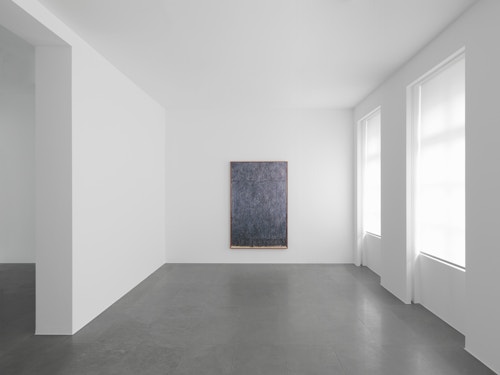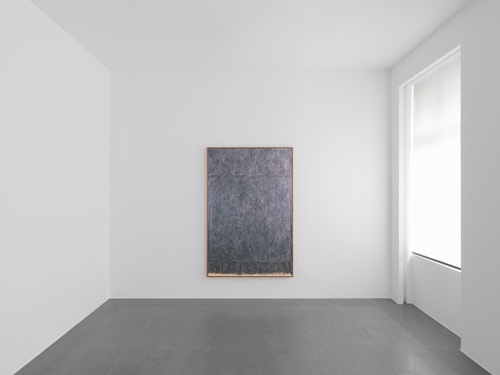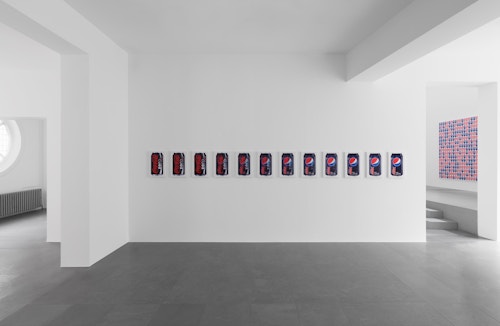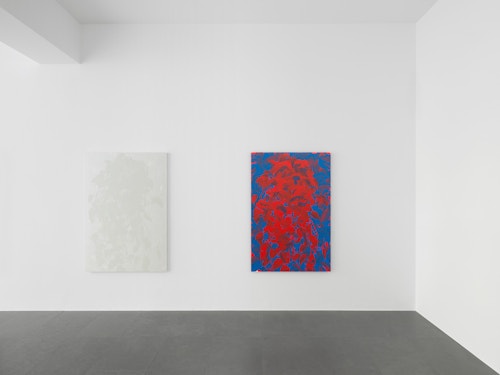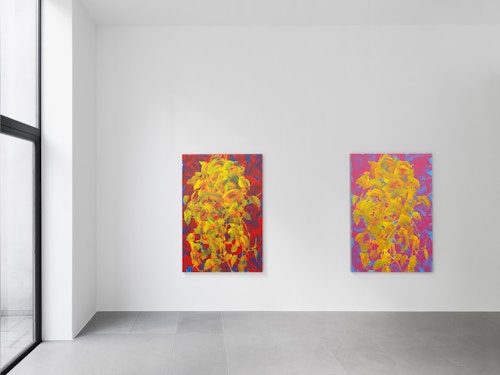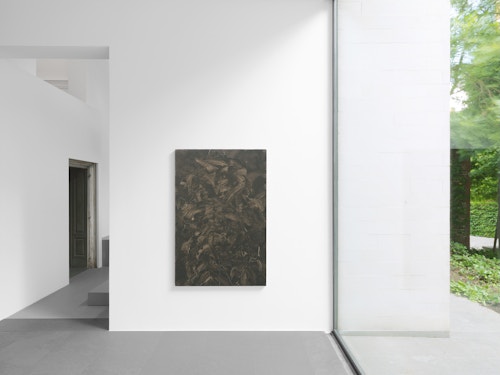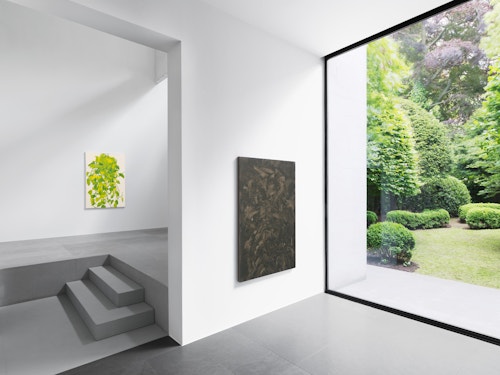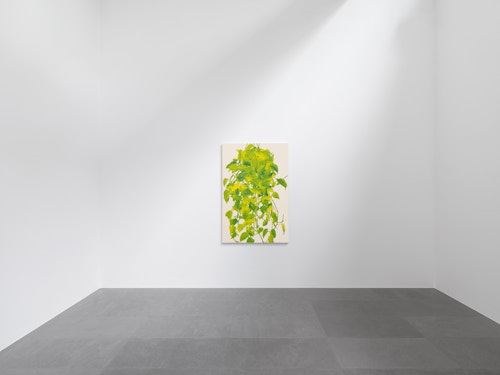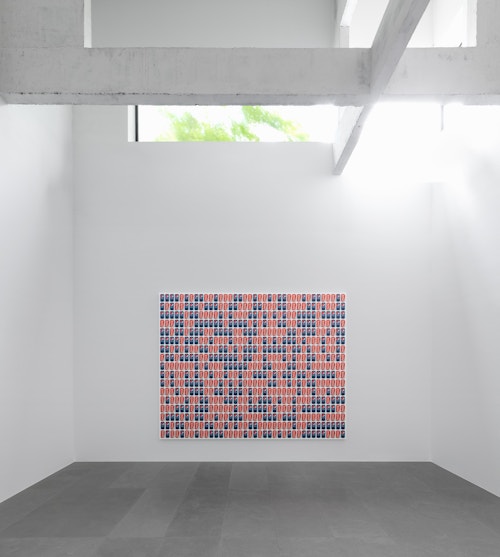
Jonathan Horowitz Plants, Mirrors, Coke/Pepsi Paintings and More
Jonathan Horowitz (b. 1966, New York) works in video, sculpture, sound installation, painting and photography and is known for his critical examination of the cultures of politics, celebrity, film and television and consumerism. At times provocative and subversive, his works often expose deeply uncomfortable truths about contemporary society. Loosely based on the idea of series, the exhibition brings together a selection of Horowitz’s recent works on canvas and vinyl.

Part of the last generation to truly straddle both the analogue and the digital eras, Horowitz emerged as a visual artist in the late 1980s, just after the death of Andy Warhol. Horowitz’s work draws, in part, on the legacy of the Pop Art era, particularly in the way that it utilizes imagery from advertising and the media. On the other hand, it is also an evolution of the media-focused art of the 1970s, the neo-conceptualist consumer art of the 1980s and the identity-driven art of the 1990s, as well as being the product of the fast-paced socio-cultural shifts that have marked the last few decades.
Horowitz uses as a vehicle Pop Art aesthetics – and the related production techniques that triggered far-reaching debates on what it means to be an artist – in a series of works based on Roy Lichtenstein’s painting Mirror #2 (once owned by Andy Warhol). A different artist-assistant painted each ‘self-portrait’ in the series, using an A3-sized printout of the original painting as a guide. Whereas Lichtenstein’s paintings are complex constructions that combine drawing, tracing, painting, brushstrokes, lines and stencils, the works produced in Horowitz’s studio are painted by eye using nothing other than paint and brushes. Instructed to simply reproduce the printed image as accurately as possible without imparting any personal style, each artist’s hand is, nevertheless, strongly evinced. Every mark is, in effect, a ‘mistake’ and unique in its ‘wrongness’: despite their visual conformity, each canvas resembles a self-portrait reflecting the individuality of the painter.
A second series of works draws upon the brand rivalry between Coca-Cola and Pepsi, a recurrent theme in Horowitz’s oeuvre. In one large work, printed onto the type of vinyl used for advertising banners, a mosaic of Coke and Pepsi cans gives visual expression to the battle for market leadership between two companies that sell almost indistinguishable products. The brand colours of the respective drinks also match the visual identity of the U.S. Democratic and Republican Parties, thereby giving the perceived corporate antagonism a political dimension. Horowitz’s Coke/Pepsi works can also be read as a wider metaphor for today’s economic and political systems, in which ‘enemies’ are in fact best friends, sharing the market and propelling each other forward.
In the smaller Coke/Pepsi works, Horowitz juxtaposes historic and contemporary advertising imagery in a style reminiscent of Warhol’s celebrity portrait diptychs. The ‘Pepsi’ half of each work features the brand’s international ambassador, the singer Beyoncé Knowles. Of mixed-race heritage and with a persona devoid of controversy, Beyonce has an almost universal market appeal, as testified to by her numerous product endorsements. In these works, Horowitz appropriates a series of fake Warhol silk screens taken from a Pepsi ad campaign. The coloring of the portraits – her skin is made to appear white and her hair is blond - alludes to Beyonce’s almost limitless potential for consumerist projections. The ‘Coke’ half of the diptychs all feature images from the Arctic, including the polar bear – Coca-Cola’s brand mascot since the 1990s. In juxtaposing these corporate icons, Horowitz tells a story of deep cultural anxiety. While the polar bear evokes a racist fear of white people’s ‘extinction,’ Beyoncé represents an almost superhuman figure in a new, mixed-race world order.
In comparison to the crisp, clear imagery of the above works, Horowitz’s ‘plant’ paintings are both exuberant and abstract: identical in subject (a Philodendron houseplant) and composition, each painting is rendered in different colours and paint application techniques. The gestural brush stokes are, however, contained by the hard edge of a stencil. These works can be interpreted as meditations on the illustrious legacy of American painting in the 20th century (the plant is like a found, Abstract Expressionist composition) and domesticity (the image of an extremely common houseplant), but also as an exploration of the concepts of freedom vs. confinement, nature vs. culture. Tennyson, Jasper and Bob(2014), on the other hand, is a more formal and regimented work that takes Jasper Johns’ 1958 painting Tennyson as its starting point. The Johns painting suggests an image of a bed that, in turn, references Rauschenberg’s seminal painting Bedfrom 1955. In Horowitz’s version, which is related to his celebrated installation Pillow Talk Bed (2002), the Johns painting is reproduced actual size and printed onto canvas. The composition is, however, altered by the embroidered addition of the names ‘Jasper’ and ‘Bob’ over the area of the painting that suggests two pillows.
Recent solo shows by Jonathan Horowitz include: Your Land/My Land: Election ’12, staged concurrently at Contemporary Art Museum St. Louis, St. Louis, Contemporary Art Museum Raleigh, Raleigh; Arm and Hammer Museum of Art and Culture Center, Los Angeles; Contemporary Art Museum Houston, Houston; Utah Museum of Contemporary Art, Salt Lake City; New Museum of Contemporary Art, New York and Telfair Museums, Savannah (2012); Minimalist Works from the Holocaust Museum,Dundee Contemporary Arts, Dundee, UK (2010); And/Or,MoMA PS1, New York (2009) and Apocalypto Now, Museum Ludwig, Cologne, Germany (2009).
